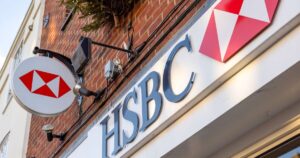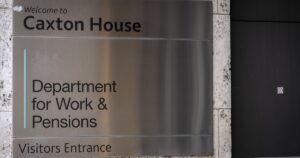
People building up their savings have been urged to read up on an important tax-free limit to avoid a bill from HMRC.
You can earn interest on your savings each year with no tax to pay but only up to a certain amount, with your allowance depending on your income tax band.
Those in danger of getting a HMRC bill due to their savings growth may look to cash ISAs as a way to protect their savings from the taxman, but an expert from savings provider Flagstone has urged savers to make sure they understand the rules first.
John Martin, Chief Product Officer at the firm, spelled out how the tax-free limits on interest earnings work and what this means for how much you can save.
He said: “Basic rate taxpayers (20%) can earn up to £1,000 of savings interest tax-free each tax year. Higher rate taxpayers (40%) can earn up to £500 of savings interest tax-free.
“For example, with savings rates at 4%, a basic rate taxpayer can hold up to £25,000 in a standard account before exceeding the PSA, and a higher rate taxpayer can hold £12,500.”
Savers aware of these limits may think the best option is to put their cash into ISAs, which are tax-free as regards any interest or investment growth.
But Mr Martin warned that while this may seem “the obvious first step”, you need to work out how it applies to your particular circumstances.
He explained: “If your interest earnings fall below these thresholds, the tax-free benefits of a Cash ISA may not always provide additional value, especially when standard savings accounts often offer higher rates.”
Looking at the options across the market, he pointed out you can get rates for a range of instant access or multi-year fixed term accounts at double the rate of inflation, which was 2.5% for the year to December.
Another tip from the savings expert is to diversify your holdings. He explained: “Savers who maintain multiple savings accounts with portions of their cash maturing on a regular basis benefit the most.
“These savers get to enjoy reliable liquidity, the strongest-possible returns, and the opportunity to capitalise on the relentless competition among banks to stay at the top of the best-buy tables.”
Turning to the question of how the base rate will move this year, he said Flagstone expects it to come down 100-150 basis points from the current 4.75%, ending the year at 3.25-3.75%.
Given the uncertainty of how savings rates will change this year, Mr Martin urged savers to act “to make sure their funds are earning the highest returns available”.
Offering a different perspective on the base rate, Joseph McLean, founding partner of NOVA Wealth, said rising costs could cause the Bank of England-set rate to stay higher.
He said these extra costs could come with the global pressures of Donald Trump‘s economic plans, or on the UK level with higher wages and increased National Insurance for employers.
He said this could mean the base rate being at around 4% at the end of the year. But he also said there could be “more aggressive rate cuts” if UK growth falters, with rates at 3.5-3.75% by the year end.
Mr McLean pointed to the turn of the tax year in April, urging people to max out their allowances. He said: “For tax-free growth, use your full ISA allowance.
“If you’re focused on cash savings, a Cash ISA is a great option. For those investing, a Stocks and Shares ISA is even more powerful.
“Remember to put your highest-growth assets here as the ISA wrapper will shield gains from tax over the long term.”
If you haven’t switch savings provider for a while, you may get a significant boost to your earnings with a more competitive account.
Bank of England data for 2024 found two thirds of all UK savings are in accounts earning 2% or less, with rates above 5% still available.
Mr Martin urged: “Right now, moving fast and switching to the market’s best-performing rates could more than double their interest earning potential.”
He gave the example of a saver with £10,000 in an instant access account at 2%, earning them £200 this year. Flagstone currently offers an account with Bank of London at 4.62%, which would earn £462 on the same funds over the course of a year.

















